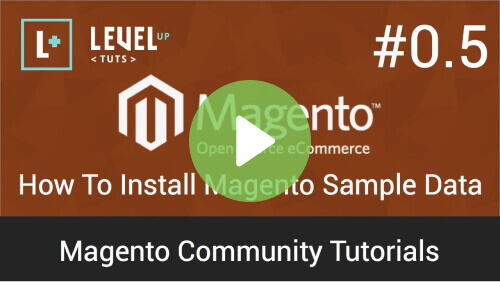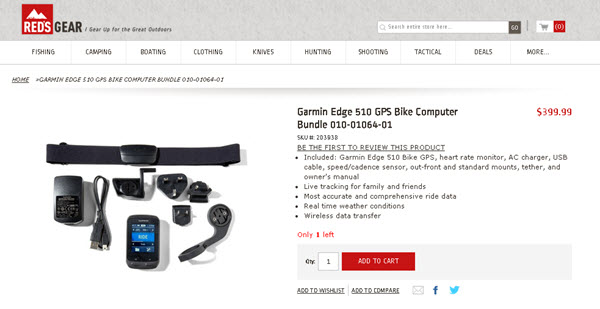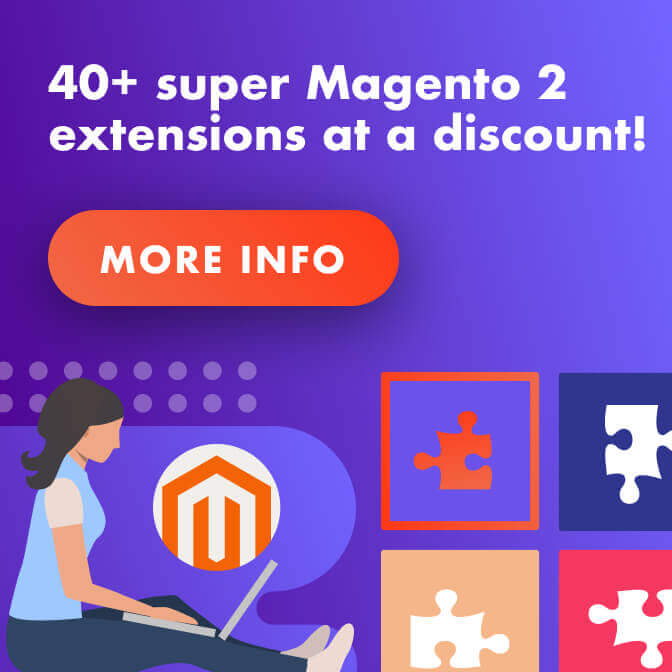If you’re new to Magento, read on for tips on getting started with the platform.

Magento keeps growing rapidly as the number one platform for eCommerce ventures. Many retailers, business owners and entrepreneurs are seeking to take their business to the next level with Magento.
Whether you’re migrating an existing store or starting a new one from scratch, if you’re not a practicing Magento developer, starting out with Magento will require a learning curve as well as a good developer by your side.
In order to make that process easier for you, we’ve summarized the different stages in the process, along with some useful resources that will help you get started.
April 2025 Offer – For a Limited Time Only:
Get All Access Pass Package for Magento 2 for 25% off! Don’t miss out!
Magento for Dummies – The Ultimate Beginners Guide to Magento

If you’ve come to the conclusion that using Magento is right for your business, the first thing to do is go to Magento.com and choose your Magento edition.
- The Magento Commerce Cloud (formerly Enterprise Edition) is a paid, tailor made solution that provides higher performance and scale-ability for fast-growing and large businesses.
It also gives you access to expert support as well as hundreds of extensions and features that you can use to power your store and generally give you more control over your website.
- The Magento Open Source (formerly Community Edition) is available for free download and is more aimed for developers who know their way around Magento or alternatively for small businesses who want to hire a developer on their own behalf.
This edition of Magento is an open source solution and gives you access to community support, as well as all basic Magento functions, such as adding product categories, user groups, coupons etc.
In addition, you’d also be able to use cool features that are unique to Magento, like multistores, related products, upsells and cross-sells.

It’s better to do the research early on and make sure you go for the edition that suits you, because although possible, migrating from community to enterprise isn’t entirely straightforward.
However, if you already started with the community edition and feel like you could do with more functions, you can always add enterprise features individually.
There’s also a sample data version available for both Magento editions, that allows you to play around with the data, see what different product types look like on the backend, and switch between themes, without actually having to insert any data manually.
Migrating An Existing Online Store To Magento
Magento uses an Entity–attribute–value model (EAV), meaning that even if you migrate the database, including your customers, orders, categories and products, you’d still need to write a script in order for everything to sync together. There are also many Magento extensions available online that can help with the migration process.
If you’re migrating from an existing store, you need to have a developer by your side. To really know what they’re doing, Magento developers normally specialize in either back-end or front-end, so bear in mind that if someone claims to be an expert in both, they’re probably bluffing.
Choose Your Hosting

Magento database is resource heavy and requires strong servers. There are several companies, such as Nexcess which specialize in hosting online stores powered by Magento.
If you have many products, or if you expect heavy traffic on your site, bear in mind that you would need stronger servers. The pricing of hostings can depend on if you want to power one or multiple stores.
Build Your Store Theme
Most stores have their own developers to build unique themes in accordance with their branding strategy.
A cheaper solution would be to purchase a ready-made theme from Themeforest and customize it to according to your preferences. It should be noted though that Magento theme customization only applies for the visual aspect of your store, or in other words, you cannot add functions using a pre-built theme.

A few examples of what you can do with Magento themes. Did we say endless possibilities already?
Add Store Functionalities Using Extensions
Magento extensions are external modules that can be installed onto your store, built to provide for a specific need within your store and add value beyond what Magento has to offer. Since Magento has such a large community around it, extensions can be found to accomplish just about anything you can think of- and this is what makes Magento the number one choice for serious business owners.
Extensions can be found in many places, with prices varying from 100% free and up to hundreds of dollars. Price is normally determined by how much an extension can increase your potential revenue. The first stop usually is the Magento Marketplace, run by Magento owners themselves.
However, other companies also specialize in selling Magento extensions developed by specialists. One of them is CreativeMinds, which provides over 40 extensions and modules.
Here are a few examples of what you can do with Magento extensions:
- Turn your store into a Multi-Vendor Marketplace
- Offer coupon codes to customers who abandoned their cart
- Add Banner Sliders to showcase your products
- And much much more- the possibilities are simply endless!
Set Up Your Database

Now that you have your hosting and theme in place, and you know more or less which extensions you’re going to use, you’re ready to start setting up your database, including:
- Store name
- Email address for notifications
- Shipping methods
- Payment methods
- Email notifications for admins & customers
- Products
- Product categories
- Additional settings required by your installed extensions
If you’re having a hard time setting up your database, here’s a great step by step Tutorial By LevelUpTuts for you!
Entering Your Products Information
Magento lets you choose between the following product types:
- Simple product– A product with no varying attributes or choices at all, i.e a one size, one color t-shirt
- Virtual products, AKA paid services, such as hourly support or any other service that requires being in direct contact with the seller
- Downloadable Products such as e-books, videos and scripts, which are another kind of simple product
- Configurable or Complex products which have varying attributes such as color, size etc.
- Grouped products– A bunch of simple products that are sold together, i.e. a camera that comes with a memory card and lens can be sold as one grouped product
- Bundled products– Join several products together and allow customers to select them out of a list. For example a bundled product could include a whole set of clothes and accessories that go well together where the customer can choose some or all of the products included.
A bundled, grouped and configurable products are very tricky to build via a data import. Typically, you’d want to bulk import the simple products, with their descriptions, images, attributes and meta data, and then build the bundled or group products through the admin tool.
Customer Groups And Pricing

Magento’s Customer Groups give you the ability to offer different pricing and promotions to customers based on their grouping, which can largely increase the number of returning customers.
Groups might be initially set when you add the customer, and change over time.
It does not matter how many people are in a customer group- You might have one customer, or thousands of them. The Customer Group might change because you want the specific customer to be in a different group, or you might want to program your customer groups to change in accordance with decisions or actions taken by your customer.
Optimize Site Speed
As mentioned above, Magento’s awesome features are resource heavy, therefore we cannot stress enough the importance of working with a good hosting company that will not only provide the technical requirements, but will also support you in times of trouble. If you’ve chosen a good hosting plan and your site still loads slowly, here are some tips for you:
- Magento offers several indexing methods that allow you to update Catalog Search database, Product Prices, Categories, Stock Status and product attributes, creating a faster and easier-to-use product catalog. Here’s a great summary of Magento indexing methods.
- Speed performance can be optimized using the built-in caching feature explained here, but you may find this caching method to lack in capabilities.
So, alternatively you can use a 2 level caching system, which is a bit more complex to set up but will cache all necessary elements.
Recommended SEO Practices

Magento is very well built for SEO, and offers many tools for drawing traffic and increasing visibility. While some of these tools are built-in Magento features, you can also add external extensions to further increase your search engine visibility. Here’s a great guide by siteground for optimizing SEO using the pre-built Magento module.
Another great way for drawing traffic to your store in by connecting it to a WordPress blog, where you can tell potential customers about the products you sell from a user point of view rather than a marketer.
This fast-growing trend lets you manage your blog straight out of the Magento backend interface, while displaying a WordPress layout with its own URL on the front end. If you want to set up this a WordPress blog for your store, we recommend using the Fishpig WordPress integration tool for Magento.
One idea is to create a content-rich FAQ page, providing content not only about your store, but general sales too. This can help boost your Domain Authority.
Using a Magento API
After you’ve set up your store with all of your products, customer groups, categories etc, you can start moving towards the next level of Magento. By integrating Magento API with an external program or code scanning device you can create your unique list of stock items that updates whenever a purchase is made.
This means that you can update your physical store inventory to automatically sync with your Magento inventory while simplifying the work of your employees and store managers.
Such integration is available in two CreativeMinds extensions.
- M2 Multi User Account – Create and manage users via API (learn how)
- M2 Marketplace – Create and manage suppliers via API (learn how)
Version Updates

Updating your Magento version is a lengthy process that requires a specialist.
As always with web programming, mistakes can lead to unwanted fatal errors, so if you need to upgrade your Magento version, its best to get a developer to do it so you don’t lose data from the database. Version updates, as well as other significant modifications should be made after midnight, so something goes wrong you’d have enough time to fix it.
Finding The Right Developer
We keep talking about how much you need a Magento developer to set up your online store, but how do you know a developer is the right one for you? Of course, the obvious thing to do is ask to see previous work examples and recommendations.
What next? The Magento corporation actually has its own certificate, granted to developers who have successfully completed the courses given by the company, either through online channels or via technological institutions and corporations across the globe.
There are many types of certificates available with Magento. Some of them
- Magento Developer Plus – similar to the one mentioned above, but specializes in the Magento Commerce edition
- Magento Frontend Developer – Specialized mostly in Magento Theme development
- Solution Specialist – A Magento project manager certification. More info here
If you have a sense for web development and feel like you could do it yourself, you can enroll to one of their courses. Otherwise, look for a certified Magento developer either in this list of certified developers, in one of the Magento-related Linkedin groups, or even better- contact CreativeMinds’ certified developers.
Conclusion

Overall, Magento is a highly flexible and scaleable platform that allows you to do things that no other eCommerce platform can compete with. It is also quite a complex platform that requires the knowledge and experience of a professional Magento developer, and as it constantly updates and evolves, even certified developers sometimes find it hard to keep up with the pace.
If you’re a DIY fan, you may need to look elsewhere at platforms that are less flexible and easier to operate, but if you want to have a truly remarkable store with bigger sales potential and endless possibilities, we highly recommend you to use Magento.




